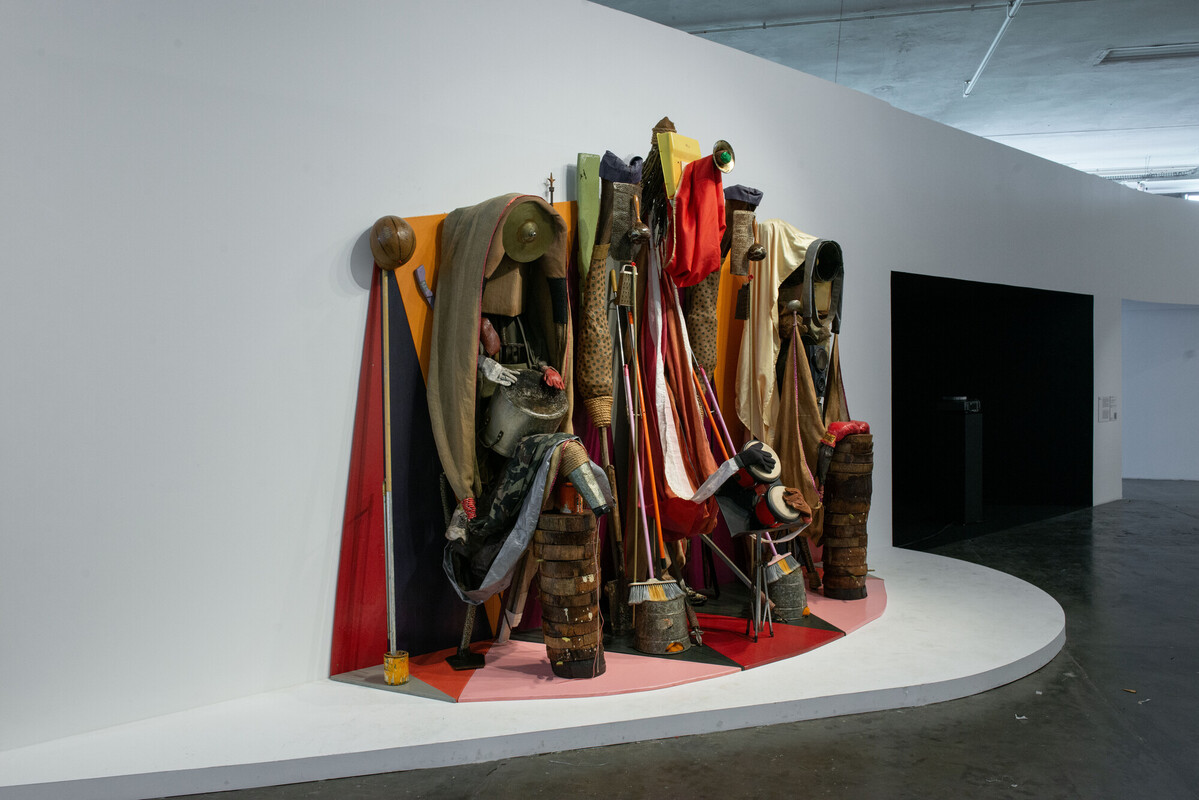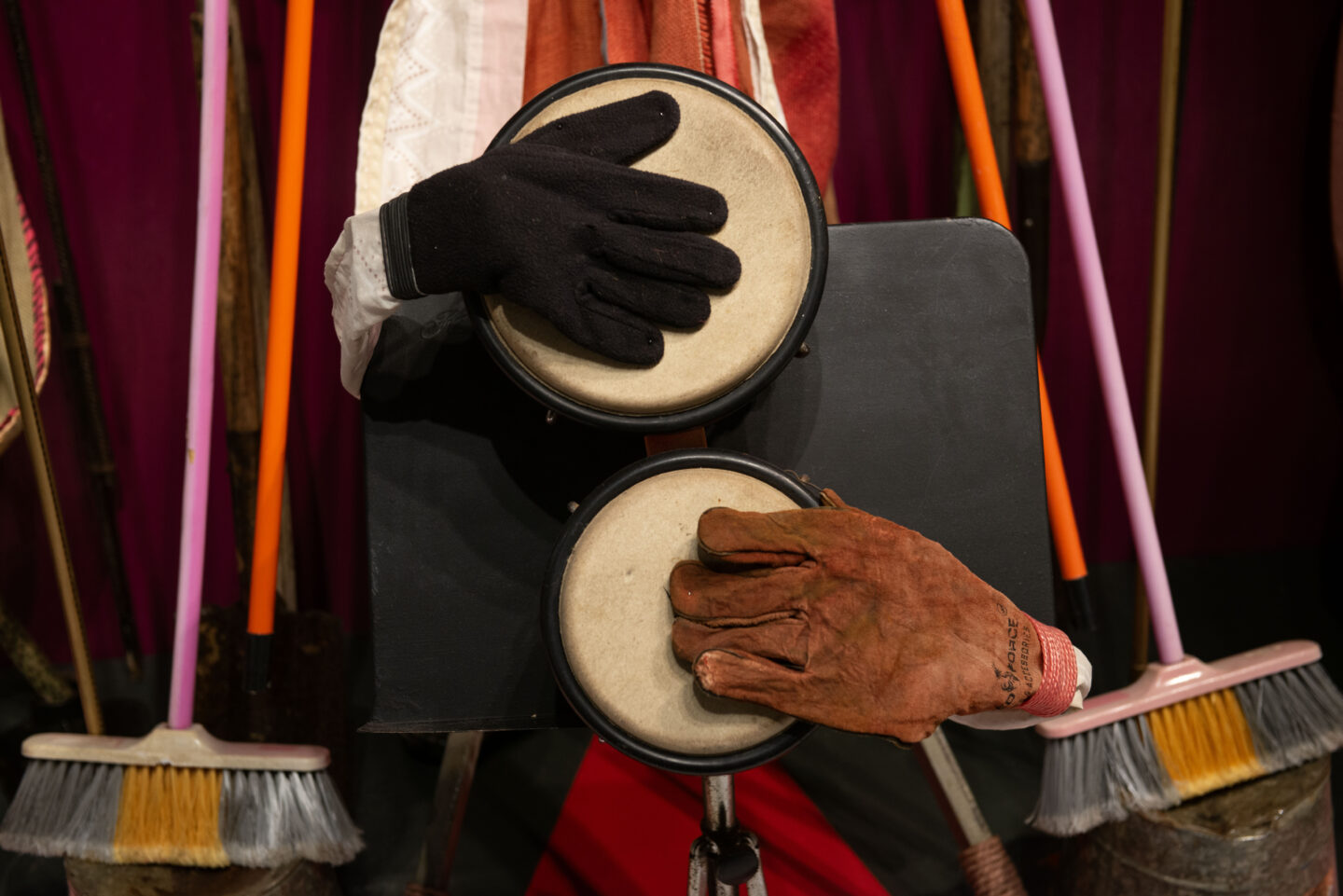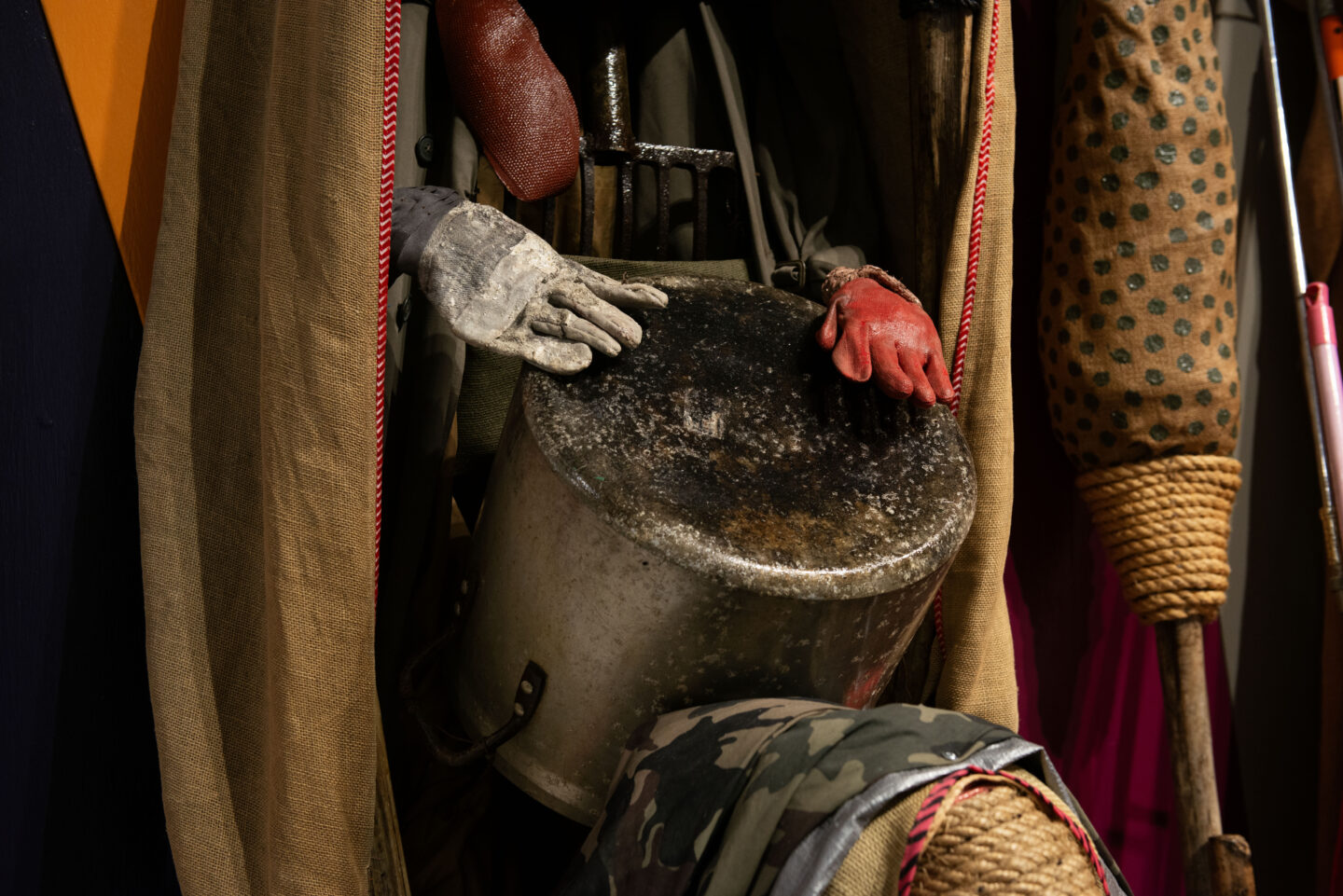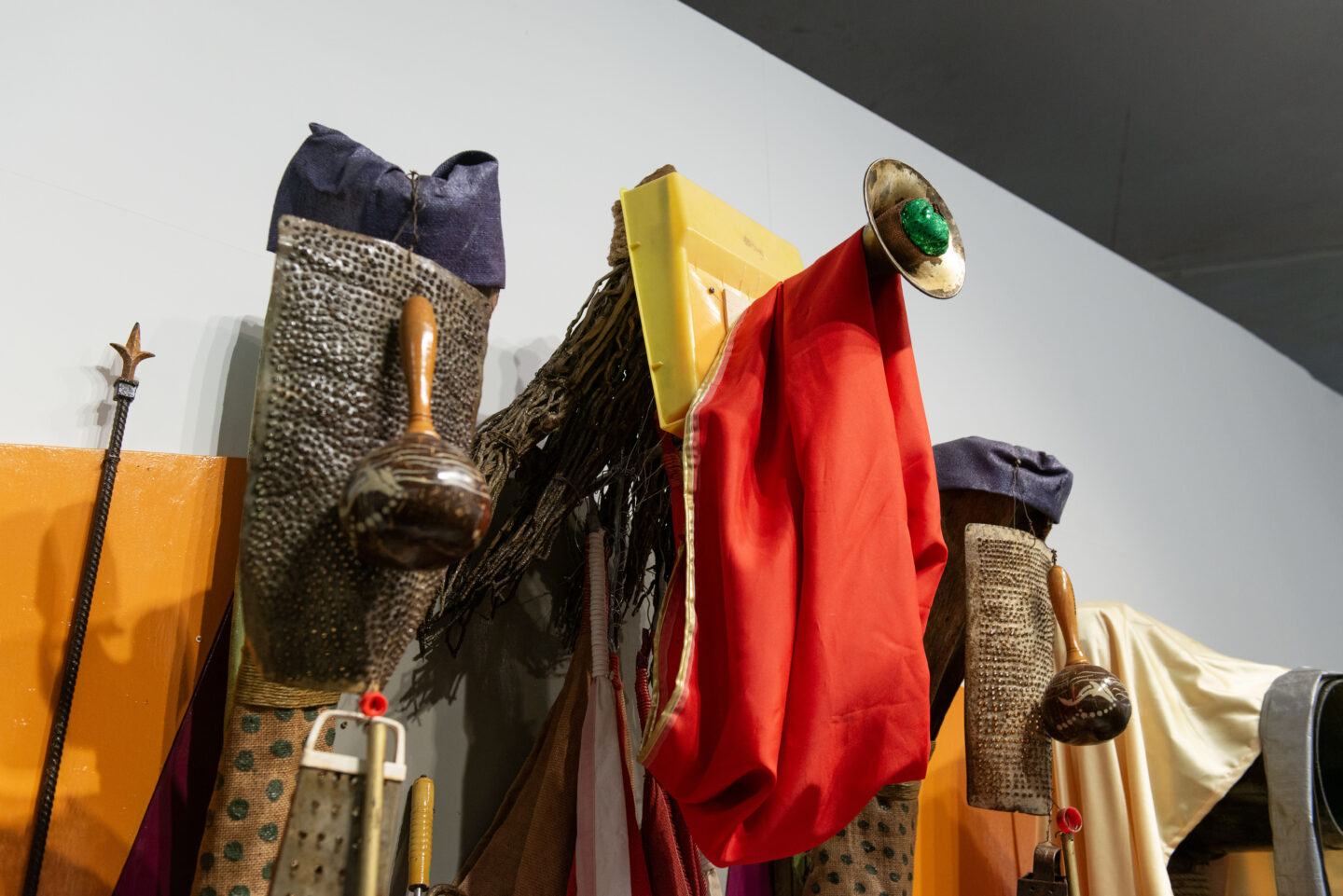
Daniel Lind-Ramos
In one way, Daniel Lind-Ramos’ work is fiercely local. His large assemblage sculptures stage an encounter with his hometown of Loíza, Puerto Rico, the area from which the found items that comprise the work are collected.
His neighbors have watched him wander the streets and beaches of the town, collecting and fitting together pieces of their communal lives over decades. Fellow Loízans, familiar with his always-open studio, bring him items they find interesting, from a nice-looking piece of pipe to kitchenware inherited from a beloved grandmother.
This geographic specificity is not insignificant. The town of Loíza is the celebrated center of Afro-Puerto Rican life with the largest black population on the island. Founded in the 16th century by Africans who escaped the then Spanish colony’s plantations, the town is the birthplace of the plena and bomba musical styles. It is well known for its street food, known locally as frituras, and its annual carnival distinguished by the traditional vejigante masks made from coconut shells. In this way, Lind-Ramos’ practice is a kind of testament to the history and significance of Loíza, a foregrounding of Puerto Rico’s blackness. “To take care of objects is to take care of memory,” Lind-Ramos tells us. He preserves the memory in these graters, brooms, calabash gourds, and cymbals; memories of joyous creation, of labor, of ancestry. Memories that might otherwise fade away or be erased.
That’s not the whole story though. Lind-Ramos has said of his work, “My intention was to find a language, find a process, find materials that establish the link between our collective experience…” The collective he speaks of here exceeds his hometown and state.
Speaking of Los Angeles based, African American artists working in the 1960s and 1970s, art historian Kellie Jones has argued that “the aesthetic of assemblage” is one of “linkage and connection.”¹ She further argues for the form’s history in African art, and its vernacular and quotidian aesthetics, which provide “a rationale for people of color to lay claim to assemblage techniques […], and to the mundane strategies of making beauty that were allowed to people on society’s margins”.² This could not be more true of Lind-Ramos’ practice and it links his art to a broader field of Afrodiasporic strategy. His sculptures connect across time and space, much like the carnival procession that Con-Junto (The Ensemble) brings to mind. Carnival straddles Puerto Rico, Trinidad and Tobago,
Brazil, New Orleans and so many other parts of the African Diaspora, themselves linked by a history of forced migration and violence, but also persistence, creativity, and innovation. Both carnival and assemblage, beautifully fused here, are moments of a most exquisite making something from that which might have been condemned as nothing.
nicole smythe-johnson
1. Kellie Jones, South of Pico: African American Artists in Los Angeles in the 1960s and 1970s. Durham: Duke University Press, 2017, p. 69.
2. Ibid., p. 71.
- Vista da obra Con-junto de Daniel Lind-Ramos durante a 35ª Bienal de São Paulo – coreografias do impossível © Levi Fanan / Fundação Bienal de São Paulo
- Obra Con-junto (The Ensemble) de Daniel Lind-Ramos durante a 35a Bienal de São Paulo. 04/09/2023 © Levi Fanan / Fundação Bienal de São Paulo
- Detalhe da obra Con-junto de Daniel Lind-Ramos durante a 35ª Bienal de São Paulo – coreografias do impossível © Levi Fanan / Fundação Bienal de São Paulo
- Detalhe da obra Con-junto de Daniel Lind-Ramos durante a 35ª Bienal de São Paulo – coreografias do impossível © Levi Fanan / Fundação Bienal de São Paulo
- Vista da obra Con-junto de Daniel Lind-Ramos durante a 35ª Bienal de São Paulo – coreografias do impossível © Levi Fanan / Fundação Bienal de São Paulo
Daniel Lind-Ramos (Loíza, Puerto Rico, 1953. Lives in Loíza) is a painter and assemblage sculptor. His work has been exhibited in spaces such as MoMA PS1, The Drawing Center (New York, USA), National Gallery (Washington, DC, USA), 3rd World Festival of the Black Arts (Dakar, Senegal), Museo de Arte Contemporáneo de Puerto Rico (San Juan, Puerto Rico), Valparaíso Biennial (Chile), Santo Domingo Biennial (Dominican Republic), Grand Palais (Paris, France) and Musée du Panthéon National Haïtien (Port-au-Prince, Haiti). His works are featured in collections of institutions like the Museo del Barrio (New York, USA) and Pérez Art Museum (Miami, FL, USA).

 Português
Português



